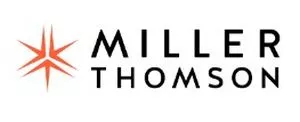- with Senior Company Executives, HR and Finance and Tax Executives
- with readers working within the Accounting & Consultancy, Banking & Credit and Business & Consumer Services industries
Installation of Carbon Monoxide Detectors: The Fire Protection and Prevention Act, 1997 now mandates the installation of carbon monoxide detectors in all residential buildings that have (i) a fuel burning appliance; (ii) a fireplace; or (iii) a storage garage (i.e. parking garage). If a building has six (6) or more residential suites, carbon monoxide detectors must be installed by October 15, 2015. For buildings with less the six (6) residential units, the date for compliance is April 15, 2015.
The following requirements apply to the installation of carbon monoxide detectors:
- For suites with a fuel-burning appliance or a fireplace, a carbon monoxide detector must be installed adjacent to each bedroom in the suite;
- If a fuel-burning appliance associated with building services is installed in a building but not within a residential suite, a carbon monoxide detector must be installed adjacent to each bedroom in each suite that has a common wall or a common floor or ceiling assembly with the service room or area where the appliance is installed.
- If the building has a garage, a carbon monoxide detector must be installed adjacent to each bedroom in each suite that has a common wall or common floor/ceiling assembly with the garage.
Most condominium corporations' declarations make unit owners responsible for installing, maintaining and repairing where necessary any carbon monoxide detectors required to be installed in the owner's suite. Boards should review their declarations, and if it is the owners' obligation to install carbon monoxide detectors, written notice should be sent to the owners advising them of their responsibility to comply with the new requirements by the above noted deadlines. Corporations should also consider carrying out suite inspections to ensure that owners have complied by the required date.
The Importance of Proper Duct-Cleaning: Regular dryer and duct-cleaning, by trained professionals with proper equipment and in accordance with industry standards, is critical to reducing the risk of dryer fires. The Ontario Fire Marshall suggests that, depending upon usage, the two to three-year mark is the point at which lint build-up in the dryer cabinet and exhaust system becomes significant and can pose safety risks, while also increasing energy consumption. More frequent cleaning should be carried out for dryers that are more frequently used. A tell-tale sign that cleaning is required is when it takes multiple cycles to get clothes dry. It is also important to review the maintenance and repair obligations in the declaration as there may be provisions that require the owners or the condominium corporation to carry out annual or semi-annual cleaning of dryer vents and ducts.
The content of this article is intended to provide a general guide to the subject matter. Specialist advice should be sought about your specific circumstances.
[View Source]

